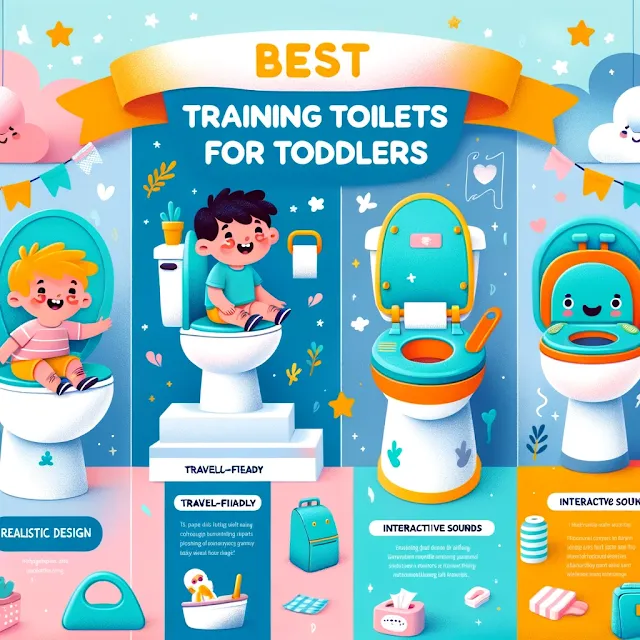🏆 Best Potty Training Toilet: A Complete Guide for Parents 🚽👶
Potty training is a major milestone for toddlers, and choosing the best potty training toilet can make the process smoother. In this guide, we’ll explore the top potty training toilets, features to look for, and expert tips to help your little one transition from diapers to the toilet with ease.
🎯 How to Choose the Best Potty Training Toilet?
When selecting a potty training toilet, keep these factors in mind:
✅ Comfortable & Safe – Look for a sturdy base, soft seat, and splash guard for boys. ✅ Easy to Clean – A removable bowl makes cleaning hassle-free. ✅ Engaging Design – Fun colors or character themes can encourage toddlers to use it. ✅ Size & Portability – Consider a lightweight option if you need to move it around. ✅ Multi-Functional – Some potty chairs convert into toilet seat trainers for long-term use.
🏅 Top 3 Potty Training Toilets for Toddlers
1️⃣ Fisher-Price Learn-to-Flush Potty 🚽🔊
🌟 Features: ✔️ Realistic flushing sounds for encouragement ✔️ Handles for better grip ✔️ Removable potty ring for toilet seat transition
👶 Best For: Toddlers who enjoy interactive learning.
2️⃣ Summer Infant My Size Potty 🚽✨
🌟 Features: ✔️ Looks like a real toilet for easy transition ✔️ Built-in wipe compartment ✔️ Flushing sound for engagement
👶 Best For: Parents who want a realistic training experience.
3️⃣ OXO Tot 2-in-1 Go Potty 🏕️🛫
🌟 Features: ✔️ Foldable and travel-friendly design ✔️ Works as a stand-alone potty or seat cover ✔️ Disposable bag compatibility
👶 Best For: Families who travel frequently or need an on-the-go solution.
🏆 Expert Potty Training Tips 🚀
💡 Start When Your Child Shows Readiness Signs – Look for signs like staying dry for longer or showing interest in the toilet.
💡 Create a Routine – Encourage them to sit on the potty after meals or before bedtime.
💡 Use Positive Reinforcement – Stickers, claps, or a reward chart can make it exciting.
💡 Be Patient & Encouraging – Accidents happen! Avoid pressure and stay consistent.
For a smooth transition from breastfeeding to potty training, check out this When to Stop Breastfeeding Guide. 🍼💖
❓ FAQs About Potty Training Toilets
🔹 Q: When should I start potty training my toddler? ✔️ Most toddlers are ready between 18-24 months, but every child is different.
🔹 Q: Should I use a standalone potty or a seat adapter? ✔️ If your child is hesitant about using the big toilet, start with a standalone potty first.
🔹 Q: What if my child resists potty training? ✔️ Take a break and try again later. Forcing potty training can create stress.
🌐 Shop Baby Essentials & More at Nappycare.store 🛍️👶
Finding the right potty training toilet can make the experience fun and stress-free! Explore our baby products, feeding essentials, and parenting must-haves on Nappycare.store today. 🚼✨

Comments
Post a Comment